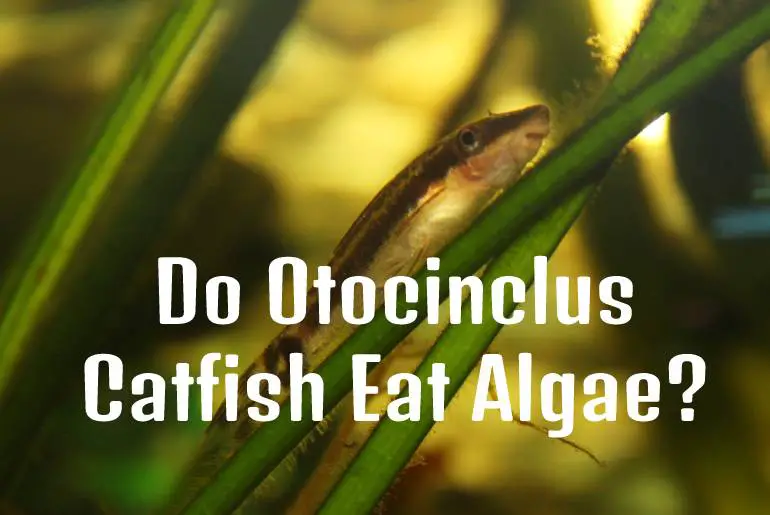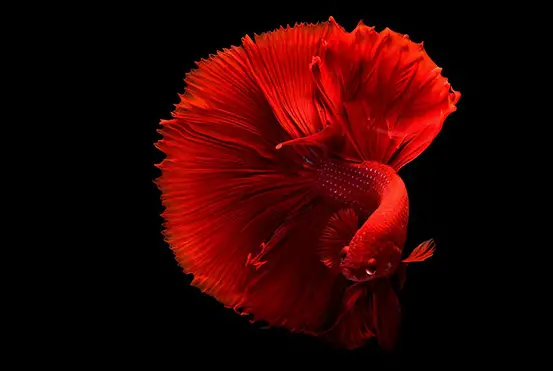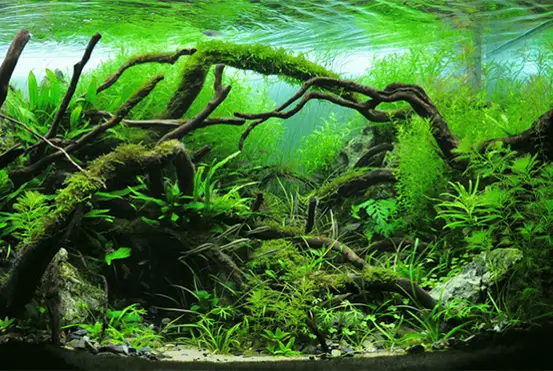You may have heard and seen people using the cleaning crew term when it comes to fish that eats algae. Many fish breeds have successfully made their way to the tops in the algae eaters list, but here we are to know about Otocinclus. So, are Otocinclus in the list of algae eaters? Do Otocinclus Catfish eat algae? If they do, what kind of algae do Otocinclus prefer?
Yes, Otocinclus catfish eat algae, not only eat, they devour algae. Otocinclus is one of the topmost and wonderful algae eaters you can keep in a tank. They prefer green algae, brown algae, and biofilm however won’t touch the hair or black beard algae.
In this article, I’ll help you know more about Otocinclus relation to algae and if eating algae is beneficial for Otocinclus.
There is always more to the story, so why not read the whole book before diving into a conclusion about anything.
Do Otocinclus Catfish Eat Algae?
Yes, of course, they do. They are one of the most renowned algae eaters you can find in the market.
Know More About 30 Best Algae Eaters For Freshwater Aquarium
Otocinclus is the ideal and first choice for fishkeepers with small-scale ponds or aquariums with uncontrollable algal growth.
Thanks to their small size and huge appetite, Otocinclus is the best algae eater one can keep. These catfish can devour large amounts of algae within a few hours and even the new algal growth.
But don’t keep them in a large pond or with large carnivores’ fish for reduction of algal infestation, you are pushing them into danger.
These Otocinclus catfish are ravenous algae eaters but won’t touch other plants from the tank. You are lucky to have a fish that will remove all the algae from the tank and even from the plants without harming the plants.
You will not even find the algae hidden in nooks or corners when you have Otocinclus in the tank. Aren’t these fish a blessing in disguise?
Nocturnal yet attractive and way ahead on the top of the aquarium cleaning crew. So, yes, my friend, these catfish not only eat algae but they devour it hence the best you can get.
Otocinclus Diet In The Wild
The diet of Otocinclus in their natural habitat plays a huge role in determining what they will eat in the tank.
Otocinclus as we already know, are herbivores hence it is quite clear that they eat plants. But will they eat all the plants present around? Will they harm the plant present in the aquarium?
Well, you have nothing to worry about here. Otocinclus don’t eat the aquarium plants but they won’t leave the algae growing on the plants’ leaves.
In the wild, you will find them eating algae and biofilm that grows on the plants and rocks around. These catfish won’t even harm the plants, they will just clean them just like any other cleaning crew.
But remember they won’t eat all the types of algae present in the wild, they are picky about that.
Why Do Otocinclus Catfish Eat Algae? Nutritional Value Of Algae
Well, first thing first, why should not they eat algae? Algae are way more beneficial than we give them credit to.
Algae consist of various essential and important phytonutrients in them, predominantly PUFAs (Polyunsaturated Fatty Acids). This includes DHA, Arachidonic acid (AA), and EPA.
But the list of blessings doesn’t end here. Algae also have a high level of antioxidants, a high concentration of proteins, and carotenoids.
All of these nutrients are highly necessary for fish to grow and thrive properly. However, the content and constituent’s percent may vary accordingly based on the algal types.
There are many positive effects of algae when it is included in any fish diet (2 to 10%) let alone Otocinclus:
- Increment in Growth Performance
- Carcass Quality
- Increment in feed utilization efficiency
- Improved Stress response
- Improved protein retention
- Disease Resistance
- Increase in intestinal Microbiota
- A rise in physiological activity
What Kind Of Algae Do Otocinclus Catfish Eat?
Otocinclus can be quite picky when it comes to their favorite food. They might be one of the best algae eaters, but sorry my friend they won’t eat all types of algae present in the tank.
The most favorite algae of your Otocinclus are green algae. These soft algae are very hard to find in the tank unless you look for them closely.
This also happens because of the fast and ravenous dietary needs of Otocinclus. These catfish finish the green algae before it even grows long enough for you to see.
They also eat biofilm as well as are best in removing brown algae out of the tank. However, there are few algae these catfish won’t even touch and let them be as they are.
Otocinclus doesn’t prefer hair algae or black bread algae, so if you are planning to get these catfish to clean those particular algae, then don’t.
Do You Have To Give Additional Foods To Otocinclus?
Finding appropriate foods for Otocinclus can be quite difficult as these are herbivores with very limited food choices.
Algae will be sufficient for their diet mostly but these fish are ravenous eater and will finish the algal growth even the new ones within an hour or two.
But algae sometimes cannot fulfill their dietary and nutritional need, so it is quite important to give them extra foods.
So, the answer to the question asked above is YES. Yes, you have to give additional foods to Otocinclus because naturally occurring algae in the aquarium will not be sufficient once your fish starts grazing.
And if you are keeping a large group of Otocinclus, the need to provide extra foods will occur faster than ever.
You can even DIY some fish food at home specifically for herbivorous fish with the vegetables you find at your home.
Although it is difficult to find suitable yet healthy and nutritious food, you have to keep looking and get creative.
You have to monitor your Otocinclus carefully as well as the algal growth in the aquarium. If you see no algae in the tank, it is peak time to feed them something else.
But if the food remains in the tank for more than 24 hours untouched, you need to remove it immediately.
This leftover or untouched food will invite ammonia into the tank and builds up the waste. You have to keep on trying till Otocinclus finds the food and keep looking for the foods next time they get hungry.
Also, don’t overfeed your dear algae eater as obesity in aquarium fish is a nutritional disease that invites other diseases to Otocinclus.
What Are The Foods You Can Feed Your Otocinclus Catfish?
Otocinclus is herbivores so you can imagine what will they probably eat. There are a few vegetables they will eat if you know how to feed them.
You can go for boiled veggies, as boiled ones are softer and tender to eat off. Vegetables like carrot, rutabaga, squash, spinach, lettuce, or any other vegetable is ideal choice when it comes to Otocinclus.
You can switch to algae wafers that are widely available in pet stores or even online. You can even DIY algae wafers in the home.
Hikari Usa Inc AHK21328 tropical Algae Wafer and Hikari Tropical Algae Wafers for Bottom Feeding Herbivorous Fish Food are two algae wafers you can get from amazon.
Just make sure and remember to remove the uneaten food and algae wafers after 24 hours from the tank to avoid cloudy water in the aquarium.
Feeding this Otocinclus is a little tricky than it may seem. However, it is as simple as feeding any other herbivores fish but these catfish ask for a little trick.
You need to make them understand and figure out foods except for algae present in the tank. You can keep these foods on the glass bowl inside the tank.
And if you want to feed them lettuce, use a clip to hang the food in the tank so it will be easier for Otocinclus to nibble them off.
Once they figure out where they will look for food in the same place all over again. It will be easier for you to feed them this way since this process is no rocket science.
How Often Should You Feed Your Otocinclus Catfish?
If you have enough algae in the tank, then this question will barely be something you need to ask. But with Otocinclus in the tank, I won’t be surprised to hear or see no evidence of algae within a few hours.
So, when it comes down to you to feed them, you need to know the feeding frequency of Otocinclus. These catfish need to eat quite often due to the presence of active bacteria in their gut.
You need to leave the food behind once in a while so that they won’t starve and the bacteria might die leaving behind digestive problems for Otocinclus.
If you are going for algae wafers, you can add these wafers every couple of days and see how fast your catfish will devour them.
If you choose to feed them veggies, cut off them into very small pieces, and drop those pieces into the tank a few times a week.
The best way is to feed them once every two days so that they have time to look and devour algae and henceforth eat the additional food you give them.
Frequently Asked Questions
Here are answers to the few FAQs about Otocinclus to guide you a little more. I hope I did a good job to make you understand things about them.
Do Otocinclus Catfish Eat Carrots?
Yes, Otocinclus catfish do eat carrots but only if you train them to eat properly. They are algae lovers and barely see anything except for algae, so you need to keep food for them in the water and let them figure it out on their own.
Once, they get the hints and the taste of carrots, they will look for them in the same place they last ate. Thus, you need to have a little patience and a lot of discipline when it comes to feeding something else than algae to Otocinclus.
Will Otocinclus Catfish Eat Moss Balls?
No, Otocinclus catfish won’t eat moss balls, at least not in the way you want them to. You see, moss balls are filamentous algae that are pretty hard to munch on.
Otocinclus prefer soft green algae that are easy for them to chew and digest but when it comes to moss balls the whole thing is quite the other way.
So, if you are keeping Otocinclus to clean moss balls from the tank, then don’t. Sorry to say but it will be of no use.
Do Otocinclus Produce Lots Of Waste?
Yes, Otocinclus catfish produces a lot of waste, but there is nothing to worry about. Due to their ravenous appetite, it is quite normal to have a huge waste mass. However, thanks to their herbivorous diet, the waste material they excrete has very low ammonia content, thus a very low risk of aquarium ammonia poisoning.
The waste materials don’t contribute to the bio-load as it might look like but that doesn’t mean the contribution is zero. With all the mess around from the excretion of Otocinclus, they still contribute a little to the bio-load, and hence cleaning the tank is quite necessary.
I have also written a article on The Easiest Way to Clean and Maintain Aquarium, this might help you.
In A Nutshell
Briefly, Otocinclus loves algae and that is their prime source of food and nutrition. You can add them to the tank with uncontrollable algal growth and get a clean tank in no time. But sometimes algae don’t suffice the nutritional needs of Otocinclus, so you have to take matters into your hand. You need to provide them extra algae, algae wafers, some vegetables (as they are herbivores, they will eat them). But if you are getting them to clean black beard algae from your tank, please look elsewhere. Your Otocinclus won’t even look at those, let go those, these fish are only devoted to green algae mostly.
Good Luck!
Choose Wisely…
Happy Fish Keeping!!!






